
9 Real Estate Landing Page Examples [2025]
Real estate agents have a lot on their plate. The product is usually high-priced and people think twice (or more) before choosing. Plus, one of the competitors may enter the game and get the prospect while they’re trying to decide.
So, as a realtor, you must make sure you show up at the right time with the right message to capture attention. Real estate landing pages serve as a focused tool that brings users one step closer to action. And that ideal place they’ll call home.
In this guide, we’ll focus on real estate landing pages to help you guide visitors towards conversion.
More specifically, we’ll see:
- Their definition and benefits
- The most common types of landing pages
- Best practices to follow
- Real estate landing page examples
- Best landing page builders with built-in templates
Turn clicks into closings
Pick a landing page template or create your own and promote your business.
Start freeWhat Is a Real Estate Landing Page?
A landing page is a dedicated web page with its own URL and unique objective. It tends to have one focus point to prevent distractions and frustration.
Designed to attract potential buyers, renters, and sellers, real estate landing pages bring the perfect real estate offer in front of each group.
With real estate landing pages, agents invite visitors to complete specific tasks. These may include singing up for a newsletter, booking a property tour, or downloading a free resource.
For example, this is a landing page template using a form to capture the user’s contact information. Once they fill it in, the brand can start sending spot-on property recommendations:

You can’t just rely on a professional real estate website to convert your target audience, as visitors may get lost in the noise. Instead, it’s best to narrow their attention to a certain action based on their needs.
Are you seeking a user-friendly landing page builder to create conversion-oriented real estate landing pages? Plus, get top real estate newsletter templates? Sign up for a Moosend account and use our premade templates to save time.
Why Should You Create A Real Estate Landing Page?
House-hunting and house-selling takes time. That’s why people need all the help they can get. And they need it asap, so browsing through your website for hours probably won’t cut it.
Which brings us back to why you should create effective landing pages for your real estate business. Here you have it:
1. Higher engagement
Homebuyers or sellers who check out landing pages have a specific need, such as searching for tips on how to write an effective listing to sell their property.
With such a unique goal, they also have higher engagement potential compared to people who end up on your homepage with no particular intent.
But if they click on an ad promoting properties in the northern suburbs of London and you direct them to your home page, chances are you’ll lose them.
Instead, give them everything they’re looking for instantly, using a single page that matches their intent. The result? They’ll browse through your real estate landing page to find what they want and finally click on the call-to-action to get it.
2. Fewer distractions
When users visit a website, they come across a multitude of pages, objectives, and links. Add to that the average user’s short attention span, and what you have is a frustrated person who doesn’t know what to do next. So, they bounce.
What does a well-designed real estate landing page tell people? “Here’s how to get what you’re looking for.” Besides that, it answers the “why” they should take action.
With no other distractions getting in the way, this is enough to hook and convert them.
3. Lead generation opportunities
Prospective homebuyers are usually willing to share their email addresses or phone numbers to find their dream homes. Or give it away in exchange for helpful content, for example a buyer’s checklist to consult during house-hunting.
So, realtors can use the information from landing pages to grow their email list, and nurture their subscribers with tailored content and offers.
Choosing the right software for real estate email marketing is crucial to build a high-converting landing page and send important emails, such as promotional and transactional campaigns.
Apart from that, you can manage your new contacts and build detailed segments to nudge them at critical times during the customer journey.
4. Urgency elements
Marketers worldwide emphasize the impact of creating urgency in marketing and sales. For example, you can use a real estate landing page to promote early access to new property listings before they go public.
This way, you move new leads faster down the funnel. The best part is that you don’t have to spend time and effort on updating your website to do so. A focused landing page that showcases the time-sensitive offer will do the trick.
5. Easy monitoring and optimization
With landing pages, you can monitor and analyze where your traffic and conversions come from, whether it’s a paid ad or an email campaign.
Since they focus on a single action, it’s easier to monitor metrics and grasp which tactics served the goal better. Also, you can perform A/B testing on different page elements (headlines, visuals, CTAs) to find the best-performing ones.
Whereas the same process is far more time-consuming and complex when applied in your entire real estate website.
What Types of Real Estate Landing Page Can you Use?
As mentioned, when you create a landing page with a unique objective in mind, it works better. And there’s a bunch of different goals to tie to your real estate landing page.
So, it’s time to check the most common landing page types to use as a realtor:
Property search landing page
Perhaps the most common pain point among house buyers and renters is that they’re having trouble find the perfect place for them.
With such a real estate landing page, you allow visitors to search listings using various filters like the price, property type, or preferred characteristics. Don’t forget to showcase how your agents could help potential buyers and renters reach their objective.
An FAQ section is a nice touch, too, showing visitors you’re aware of their main concerns and challenges—and you’re ready to address them.
“Sell my home” landing page
There’s no use of finding the right people to sell to when you don’t have what to sell. Therefore, you need this kind of real estate landing page to capture seller leads.
But selling a house is a challenging task, especially for people who lack time. Like with property search landing pages, this is a use case where you should make things clears for your leads. What do they have to do? How long will it take?
It’s critical that your landing page answers these questions upfront. To ease their minds, consider including a call-to-action so they can directly contact an expert agent.
Home valuation landing page
This type of real estate landing page aims at targeting homeowners who may be thinking about selling their property but perhaps aren’t ready just yet.
How can you attract potential sellers and convince them? It all comes down to giving them an expert and quick evaluation of their property’s value so they can instantly tell if it fits their expectations.
The key word here being quick. The more user-friendly and simple the process, the higher the chances of conversion.
Here’s an effective home evaluation landing page by MyLondonHome. The user is prompted to fill in a straightforward form. With it, the brand gathers data like the address and type of the property whereas the user gets a laser-focused evaluation.
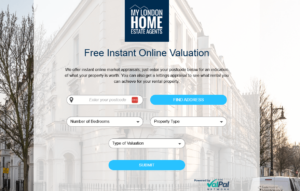
Lead generation landing page
Sometimes, it’s not about going for the sale. At least not right away. This landing page type allows you to convert random visitors into promising leads.
Using your email and/or SMS marketing (depending on the info you ask for), you’ll be able to deliver timely offers and updates.
To give them a gentle nudge, consider adding a lead magnet to the mix. For example, a virtual property tour in exchange for their email address.
Open house landing page
This a dedicated page that you may use to announce and build excitement for upcoming open house events. With it, you offer all the event details like the date and time or the property’s highlights. Plus, you may allow the user to RVSP.
This is an excellent way to capture warm leads that are willing to visit and potentially buy or rent. Even if you choose to just collect their contact details, it’s enough to nurture them all the way to the actual date.
Once the event is over, you should keep the lines of communication open. For instance, send personalized follow-up emails based on their in-person engagement or any preferences shared.
How to Build Converting Landing Pages for Real Estate
What are the must-haves of an effective real estate landing page? In this section, you’ll learn how to use each page element to drive conversions.
1. Write a Strong Headline
The headline of your real estate landing page is the first thing the visitor sees. So, you must make it powerful to pique their curiosity.
However, you want it to be concise and clear, too. You don’t prospects to wonder if they landed on the right page.
So, ensure your headline conveys the core message and sets the tone for the entire page. An effective headline helps users grasp what your value proposition is while encouraging them to explore the page (and your value proposition) further.
Stay away from vague, overly common headlines that don’t add any value. “Find your dream house” isn’t enough to convince them. Instead, think benefits and pain points. Not just what you offer, but also what they can get out of it.
Sundae created a compelling headline that promises to remove a common pain point: selling a house as it is. Picture it: no repairs, no showing, no clean ups. And no fees to the brand, a trust-building element that makes the offer stand out.
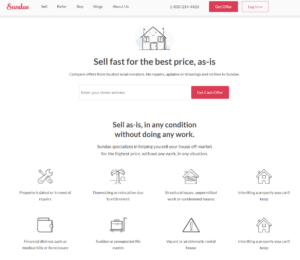
2. Craft Simple Yet Clever Copy
Conveying your message starts with a strong headline. And then it should give way to the rest of the copy. Here’s where you should keep up the good work to engage users, and finally, convert them.
Keep your copy short and concise so visitors can easily understand your offer. Also, invest in actionable and compelling language to achieve results.
While it’s important to impress your audience with your copy, don’t sacrifice simple and clear just to go for the wow factor. Real estate leads prioritize quick and easy-to-grasp solutions to pain points.
Another thing to ensure is to follow your unique tone to keep a consistent brand experience across touchpoints.
3. Add a Single CTA
Minimizing distractions plays an integral part in keeping visitors focused.
And what they should focus on is the specific action you want them to take. Which should be supported by a unique CTA. Mixed signals are likely to fail, plus result in bounces.
So, what do you expect from them? Submitting a form, contacting an agent, or downloading a resource?
Whatever it is, you’ll need a straightforward and action-oriented CTA that lets them know what comes next.
Also, pick a prominent place for your call-to-action and surround it with enough white space to ensure it pops out.
4. Use Visuals
A picture is worth a thousand words. This is more than true in real estate marketing where leads want to envision the property they’ll invest in. Or perhaps meet the people they’ll do business with.
Hence, you should enrich your landing page design with high-quality visuals that clearly showcase your value proposition.
You might use visual elements like professional images of your property to present its best features. Or even incorporate virtual tours in the form of videos so they can check the property and the surroundings.
For instance, Homes Costa Rica includes a video to its property listing landing page to persuade users to consider the region for their next real estate investment:

Another option is to include a professional image of your team. This human touch makes it easier for users to connect with your business.
5. Build User-Friendly Forms
Are you planning on using your real estate landing page as a signup form? If so, you could be hitting two birds with one stone: getting your message across and the visitor’s contact information.
These are the good news. No bad news exactly. But you do have to put some thought in your form to ensure conversions.
The first thing is to keep it short, sticking to essential information: name and email address. Some real estate businesses may keep it as simple as having a single field for the email address.
If the form isn’t easy to complete or you ask for data they don’t want to provide, you risk tiring them out. As a result, they’ll withdraw from the process; especially if they can find faster paths to get what they want from competitive businesses.
Another thing that works to increase completion rates is offering something in return. From early access to exclusive home listings to free market analysis, the right incentive could bring more people in your contact database.
NPP Residentials takes a different approach in their “Contact Us” landing page. They don’t just ask for basic information but also include a few checkboxes to better understand the user’s requirements.
While it’s extra information, it feels relevant because the visitor can immediately tell why the brand needs it: providing a targeted experience with personalized content. Also, checkboxes are the quickest trick in the playbook.
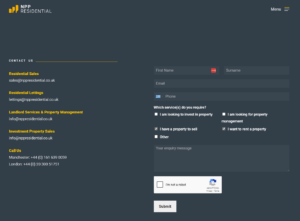
6. Play the Social Proof Card
42% of consumers trust online reviews as much as recommendations from family and friends. Therefore, displaying genuine social proof on your real estate landing page is ideal to establish trust quickly.
As a realtor, you’ll have to spend a significant amount of time to prove the quality of your value proposition and build (and maintain) a solid reputation. Social proof elements get you one step closer without the time and effort required otherwise.
When satisfied customers speak of the value of your services, there’s tangible results of what someone may achieve with your real estate business.
Some of the most popular social proof types include customer reviews, ratings, and testimonials. Do you want to go more in-depth? Then, a case study allows you to showcase how your clients tackled a challenge with your help.
Best Real Estate Landing Page Examples And Why They Work
Lacking inspiration on how to set up successful landing pages for your real estate business? Here are some landing page examples that caught our attention and why they stand out:
1. Compass

Why it works:
- Crystal clear copy that answers why someone should list a property as a Compass Private Exclusive
- A compelling image of a dream house allows the user to imagine their own house featured as an exclusive, luxurious place to live
- The form is short and straightforward, investing in clean design and a concise CTA that explains the next action effectively
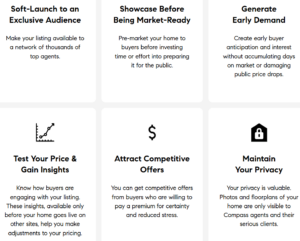
But they didn’t leave it there. If the visitor scrolls down, they’ll find a detailed section that lists the benefits of choosing this listing option. No room for fluff here, so they stick to the key points that align with common sellers’ challenges.
2. Lennar
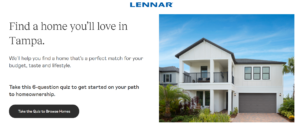
Why it works:
- Lennar created a short quiz to help prospects navigate their home search in an entertaining way
- The headline is actionable and clever, showing readers what they’ll get in a few words
- The process is simple, involving six questions about the user’s ideal property; when they complete it, all it takes is sharing their contact information to receive personalized listings
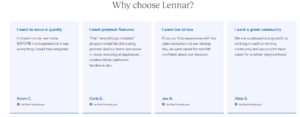
Finally, they place social proof from happy homebuyers at a prominent place within the page to reinforce the credibility of their brand.
3. homfi
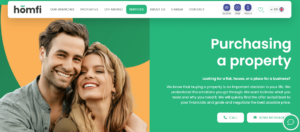
Why it works:
- homfi’s landing page cuts to the chase by offering two contact options, thus removing extra steps
- The colorful design and intimate image of a couple grabs attention while adding a more human touch
- The landing page copy is full of empathy, highlighting how the brand will help prospects go through this challenging endeavor

Where do they differentiate themselves, though? They break the process into smaller steps to make things easier for visitors. Every step is a visual cue that explains exactly how it works and addresses potential questions upfront.
4. McGraw Realtors

Why it works:
- ΜcGraw Realtors uses a market report and the benefits of their email newsletter to incentivize leads
- The minimalistic design and copy is centered around the required action and its value
- The only information the prospect has to fill in to get the location-specific report is their email address (the phone number is an optional field):
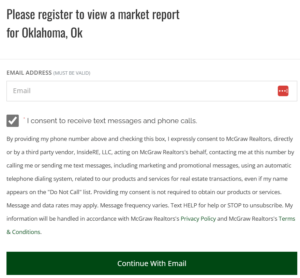
5. RE/MAX

Why it works:
- RE/MAX’s landing page has a unique focus point, and that’s encouraging prospects to enter the sweepstake
- The brand is clear about its intentions: nothing about selling, all about giving away ($1,000 for renovations is one of the most powerful incentives we’ve seen)
- The headline and CTA are bold and highly-visible, using straightforward language to prompt quick action
6. Luxury Estate

Why it works:
- Luxury Estate created an uncluttered, focused design to minimize distractions
- The question in the headline and the short and crisp copy grab attention while clearly communicating the action
- Scrolling down, the clever copy emphasizes on the evaluation benefits (efficient, safe, free) and includes power phrases to build authority and remove doubts (“Take the guesswork out. Ask an expert.”):
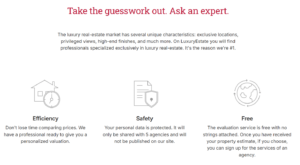
7. Redfin

Why it works:
- Redfin opts for a clean landing page design with plenty of white space to make the core message pop
- A pleasant image that represents the interaction between the sellers and the agent reduces the intimidation factor
- The brand uses an impactful phrase (for half the listings fee) to motivate prospects to act
And they make sure to make things even clearer during page scroll. They use a dedicated section to compare Redfin’s agents to competitors; once more, a heart-warming image does the trick:

8. Domain
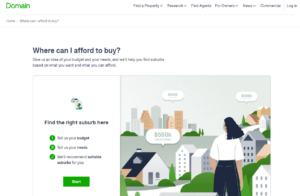
Why it works:
- Domain uses minimalistic design to make the quiz and the brightly-colored CTA stand out
- The first person in the question used in the headline helps visitors relate to the message
- The quiz promises to find a solution to a popular pain point: finding a house that fits both their budget and requirements
To get the most out of their landing page, they use the bottom of the page to promote the app so every user keeps house-hunting even when they’re on the go:
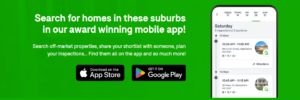
9. Keller Williams

Why it works:
- The inspiring headline needs no more than three words to convince prospective agents to join Keller William’s team
- The powerful video placed at the top catches the visitor’s eye and complements the compelling copy
- Right below, the founder reveals the story behind the business to further motivate readers:
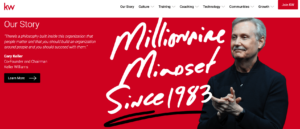
Top Landing Page Builders For Real Estate
Ready to create the perfect landing page but don’t know where to start? Then, it’s time to take a look at the top-three landing page builders:
1. Moosend
Pricing: Starts at $9/month, 30-day free trial
Best features: Built-in, fully customizable landing page templates
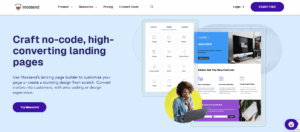
If you’re looking for a cost-effective email tool that also offers a robust landing page builder, then Moosend is a great choice for you. It combines professionally-designed and responsive templates landing pages and signup forms to capture your audience.
Once you have their email addresses, the platform lets you access newsletter templates to start building your real estate email marketing strategy.
Moosend’s landing page builder is easy to grasp, so even novice marketers can use it from day one. All you have to do is pick a premade template, tweak it with a few drag-and-drops, and customize it to your needs.
For example, Moosend helps you enhance your landing pages with various assets, such as countdown timers to create a sense of urgency or videos to convey your message effectively.
Care to try Moosend’s advanced capabilities? Sign up for a free trial today, check out its features, and create your first landing page.
2. Unbounce
Pricing: Starts at $99/month, 14-day free trial
Best feature: AI-powered tools
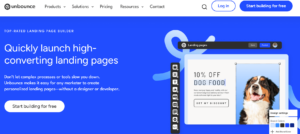
Looking for a leading landing page builder to cover every aspect of their creation?
Unbounce is a reliable solution with a wide selection of prebuilt templates and customization options to build the ideal landing page for your objective. You can also find a category dedicated to real estates businesses.
Moreover, you have the option to create popups and sticky bars and use AI features to write effective copy or optimize your traffic (the last in high-tier plans).
To maximize results, Unbounce allows you to incorporate links to your website or share the page on your social media. Plus, you get A/B testing capabilities (although not available in the cheapest plan).
Even though it’s a great tool, it’s probably not a budget-friencly choice for small businesses. But real estates with bigger accounts can definitely give it a shot.
3. Leadpages
Pricing: Starts at $49, 14-day free trial
Best feature: Conversion tools

Leadpages is a cheaper alternative to Unbounce with ready-made landing page templates and user-friendly features.
Among them, there’s a drag-and-drop landing page editor that you can integrate with other apps and platforms you use (e.g., your CRM) to make lead management easy.
This solution also has landing page optimization options, such as the unique Leadmeter feature that monitors page performance in real-time and offers tips to improve it.
You’ll also find an A/B testing tool to pick the most converting elements and use them to create a top-notch landing page.
Finally, Leadpages allows you to leave comments for other team members during landing page creation so you don’t go back and forth.
Ongoing Optimization, Long-Term Results
To take your digital marketing efforts seriously, landing pages should definitely be on your checklist. Nurture your target audience by using the right landing page design, copy, and call to action.
And remember not to leave anything to chance. Prospect and customer behavior changes all the time, and so do market standards. Therefore, ensure your landing page assets are meaningful and relevant to your real estate buyer personas to increase conversions.
Moreover, make A/B testing and continuous optimization a priority so you can always identify areas for improvement.
Lastly, keep in touch with your customers, asking for their insights. Regardless of the marketing efforts you use, your audience is always a catalyst for the success of your real estate business.
FAQs
Read for a quick round of frequently asked questions regarding landing pages for your realty or brokerage. Let’s see:
1. What should I include in a real estate landing page?
The crucial elements are a compelling headline, actionable copy, and a relevant call-to-action, followed by great images. Form fields and testimonials are also valuable assets to count on.
2. How do I create a real estate landing page?
You can use a landing page builder, such as Moosend or Unbounce, that offer professional landing page templates and robust builders to customize them as you please.
3. Are real estate landing pages profitable?
Real estate landing pages can boost your ROI by bringing more leads into your funnel, contributing to a higher conversion rate.
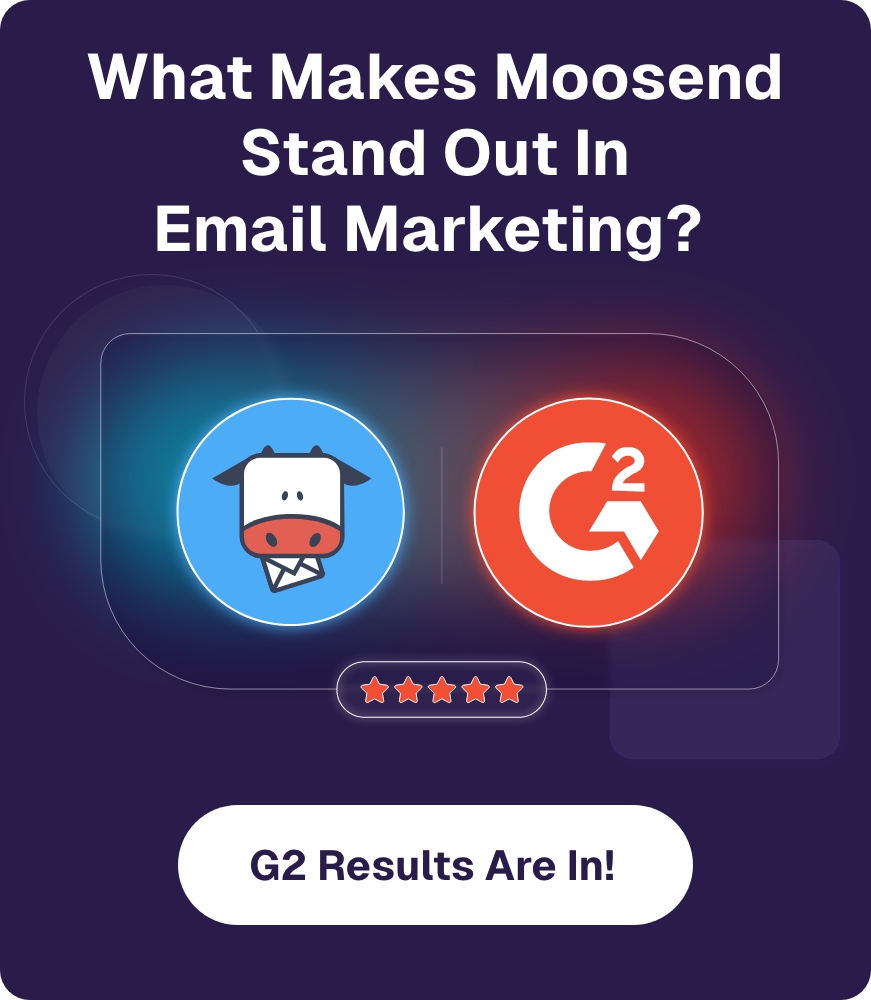
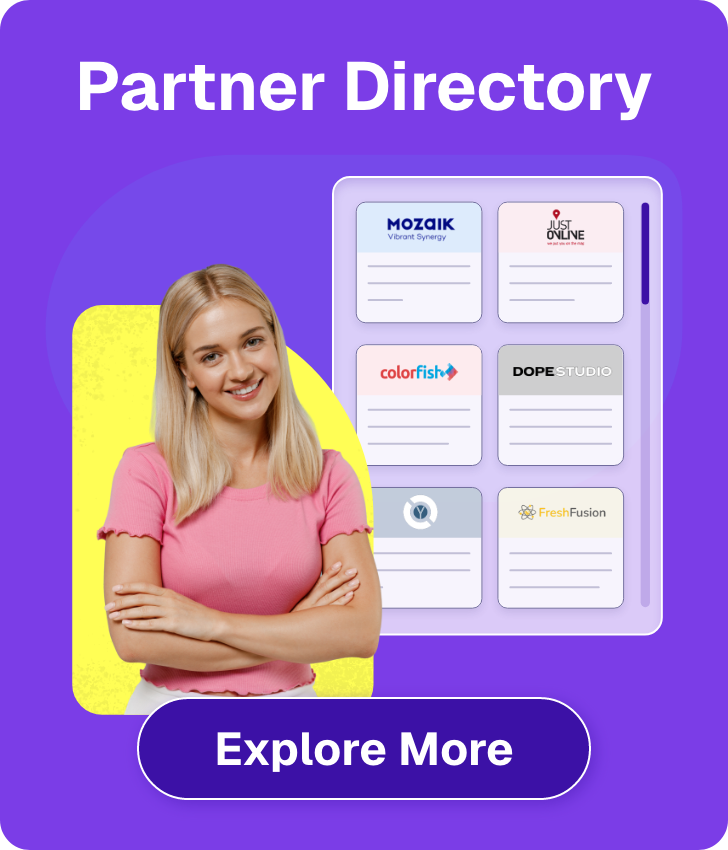

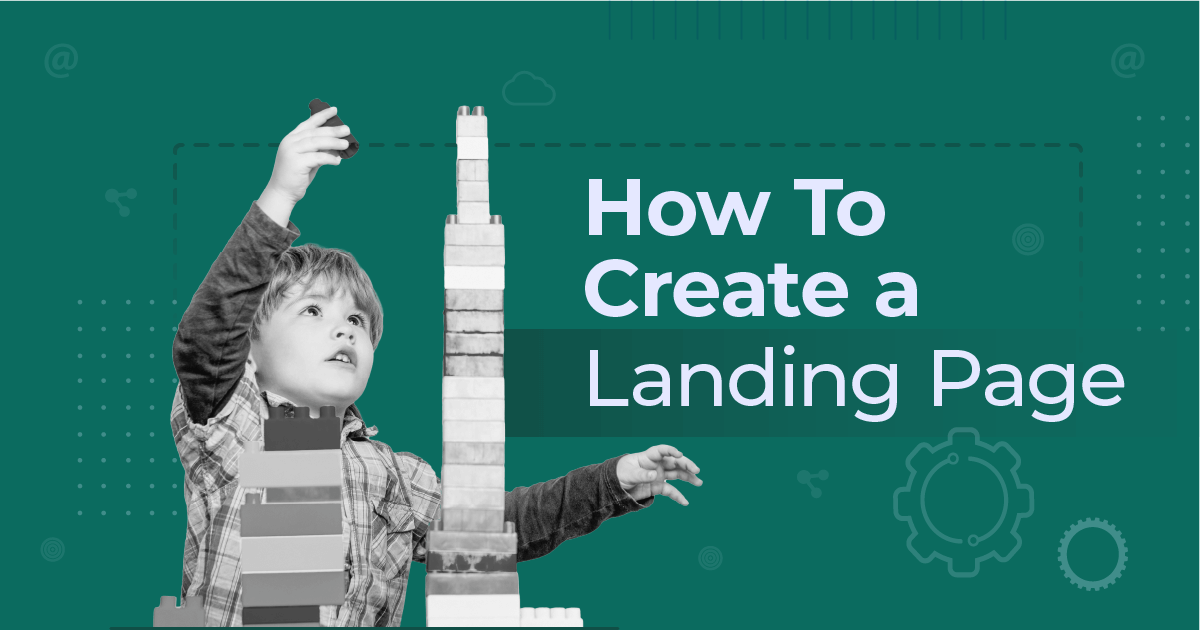
 Published by
Published by

 Published by
Published by
